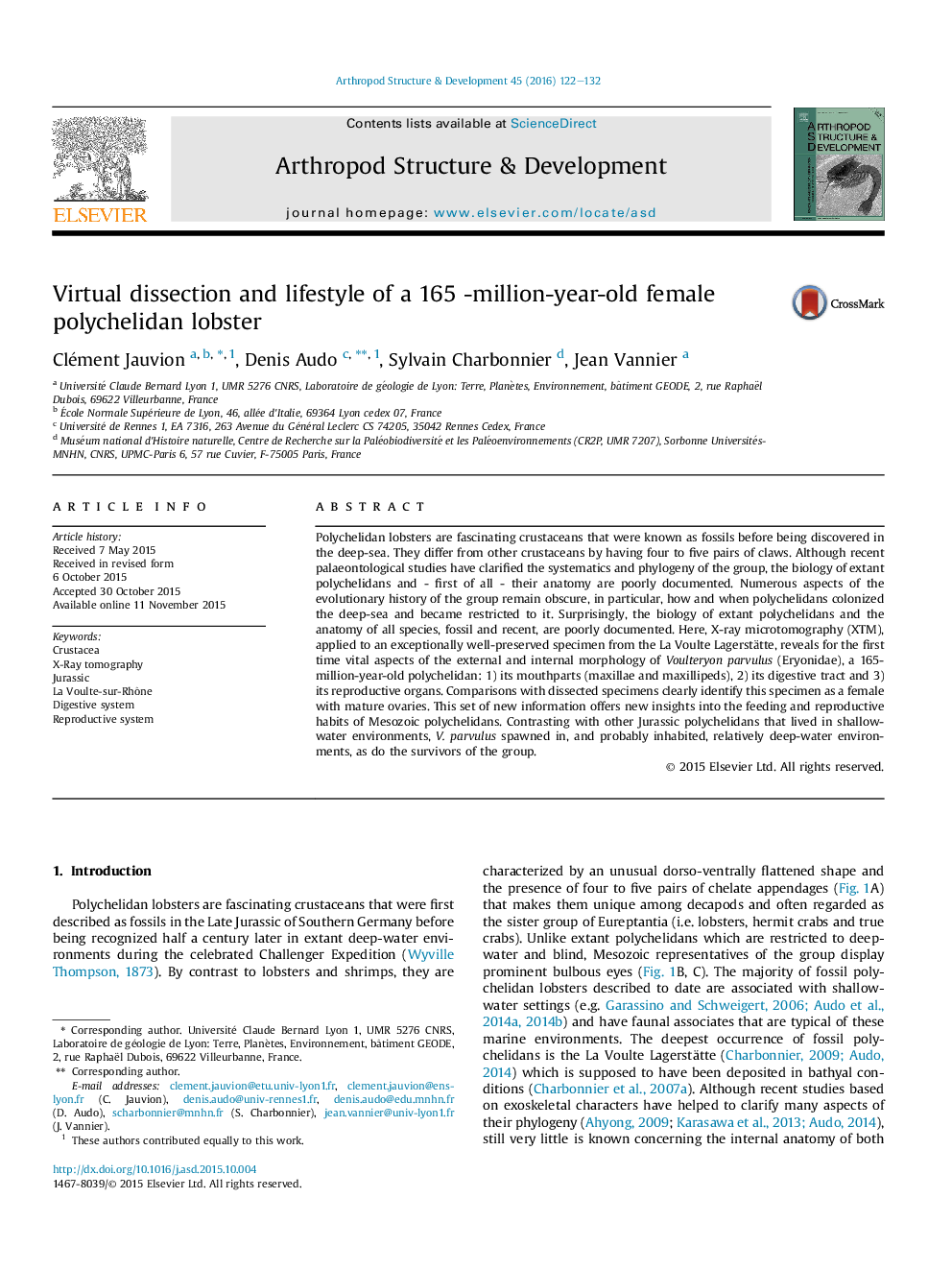| Article ID | Journal | Published Year | Pages | File Type |
|---|---|---|---|---|
| 2778491 | Arthropod Structure & Development | 2016 | 11 Pages |
•X-Ray tomography of a crustacean from the La Voulte Lagerstätte.•3D reconstruction of its morphology (incl. digestive and reproductive systems).•First description of a polychelidan ovigerous female from the Mesozoic.•Insights into the possible lifestyles of Mesozoic polychelidan lobsters.
Polychelidan lobsters are fascinating crustaceans that were known as fossils before being discovered in the deep-sea. They differ from other crustaceans by having four to five pairs of claws. Although recent palaeontological studies have clarified the systematics and phylogeny of the group, the biology of extant polychelidans and - first of all - their anatomy are poorly documented. Numerous aspects of the evolutionary history of the group remain obscure, in particular, how and when polychelidans colonized the deep-sea and became restricted to it. Surprisingly, the biology of extant polychelidans and the anatomy of all species, fossil and recent, are poorly documented. Here, X-ray microtomography (XTM), applied to an exceptionally well-preserved specimen from the La Voulte Lagerstätte, reveals for the first time vital aspects of the external and internal morphology of Voulteryon parvulus (Eryonidae), a 165-million-year-old polychelidan: 1) its mouthparts (maxillae and maxillipeds), 2) its digestive tract and 3) its reproductive organs. Comparisons with dissected specimens clearly identify this specimen as a female with mature ovaries. This set of new information offers new insights into the feeding and reproductive habits of Mesozoic polychelidans. Contrasting with other Jurassic polychelidans that lived in shallow-water environments, V. parvulus spawned in, and probably inhabited, relatively deep-water environments, as do the survivors of the group.
